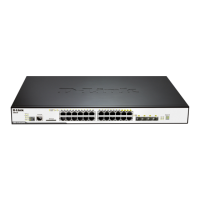69-2 show ethernet_oam ports
Description
This command is used to display Ethernet OAM information, including status, configuration,
statistics, and event log, on specified ports.
The status information includes:
(1) OAM administration status: enabled or disabled.
(2) OAM operation status. It maybe the below value:
Disable: OAM is disabled on this port.
LinkFault: The link has detected a fault and is transmitting OAMPDUs with a link fault
indication.
PassiveWait: The port is passive and is waiting to see if the peer device is OAM capable.
ActiveSendLocal: The port is active and is sending local information.
SendLocalAndRemote: The local port has discovered the peer but has not yet accepted or
rejected the configuration of the peer.
SendLocalAndRemoteOk: The local device agrees the OAM peer entity.
PeeringLocallyRejected: The local OAM entity rejects the remote peer OAM entity.
PeeringRemotelyRejected: The remote OAM entity rejects the local device.
Operational: The local OAM entity learns that both it and the remote OAM entity have
accepted the peering.
NonOperHalfDuplex: Since Ethernet OAM functions are not designed to work completely over
half-duplex port. This value indicates Ethernet OAM is enabled but the port is in half-duplex
operation.
(3) OAM mode: passive or active.
(4) Maximum OAMPDU size: The largest OAMPDU that the OAM entity supports. OAM entities
exchange maximum OAMPDU sizes and negotiate to use the smaller of the two maximum
OAMPDU sizes between the peers.
(5) OAM configuration revision: The configuration revision of the OAM entity as reflected in the
latest OAMPDU sent by the OAM entity. The config revision is used by OAM entities to indicate
that configuration changes have occurred, which might require the peer OAM entity to re-evaluate
whether OAM peering is allowed.
(6) OAM mode change.
(7) OAM Functions Supported: The OAM functions supported on this port. These functions include:
• Unidirectional: It indicates that the OAM entity supports the transmission of OAMPDUs on links
that are operating in unidirectional mode (traffic flowing in one direction only).
• Loopback: It indicates that the OAM entity can initiate and respond to loopback commands.
• Link Monitoring: It indicates that the OAM entity can send and receive Event Notification
OAMPDUs.

